
The Athenian Tyrants and Classical Democracy
Jul 12, 2024As we move into late Archaic & Classical Periods, we’re still a while off from the Democracy Athens was famous for. Instead we first encounter the reigns of the Athenian Tyrants. Now, we need to reframe things a bit. While the modern English word “tyrant” generally denotes oppressive regimes or autocratic rulers, initially, during the Archaic & early Classical, a tyrant wasn’t a negative quality or descriptor, it simply refers to the consolidation of power in a single individual or leader. It wasn’t until the advent of Democracy in the wake of the early 6th century riots that overthrew many governments that Tyranny became more heavily demonised.
Tyrants are not exactly kings in the conventional sense as we understand it. Their acquisition of power and eventual use of it is markedly different. Many of the early Tyrants were not born into power, but acquired it through rhetoric and building relationships with the wider people and gaining the support of different factions of a deme. In this sense of the word, a tyrant was simply anyone, good or bad, who obtained executive power in a polis by unconventional means. Their support could come from fellow oligarchs, from the middle class or from the peasants who had no land or were in debt to the wealthy landowners.

Alongside the deme, the regular people, there was the Aristocracy of wealthy citizens, which increasingly became a highly competitive culture with the advent of zoned Polises. An argument could even be made that the Tyrants were initially broadening power dynamics by involving more members of the urban population so that decision making did not rely on the Aristocratic networks alone. Naturally, as a ruler one of the best ways to get the people on your side is to engage projects that directly benefit them. We see this exemplified in the Late Archaic through extensive civic architectural projects in urban centres.
In early 6th century Samos for example, we find evidence of the Tyrant Polykrates constructing numerous projects. Under his rule the Samians developed an engineering and technological expertise to a level unusual in ancient Greece. In the midst of his account of Polykrates, Herodotus notes three engineering works. The first was an aqueduct in the form of a tunnel 1,036 metres long which can still be seen and was known as the Tunnel of Eupalinos. Polykrates also supposedly sponsored construction of a large temple of Hera which was one of the three largest temples in the Greek world at the time. He also appears to have upgraded the harbour of his capital city, ordering the construction of a deep-water mole nearly a quarter mile long, which is still used to shelter Greek fishing boats today. Archaeological work on Samos has called Herodotus into question however, as the temple of Hera was clearly already well underway before his rule.

Athens
Moving back to Athens though, I covered many features of the city in the last post. Importantly, alongside the Agora and Acropolis, the Panathenaic Way served as the central street that crossed throughout the entirety of the city. While it was appropriated for religious and festive use at times like the Eleusinian Mystery Processions or the Panathenaic Games, its usual everyday purpose was commercial and civic, hosting avenues of shops and meeting places. As well as its physical use though, connecting districts and neighbourhoods of the city, the Panathenaic Way also served to create ideological links between aspects of power in Athens. The road served primarily to connect the Acropolis with the Agora in such a way that nearly everyone who came to Athens would have had to pass through it.

A space like this was therefore pivotal to Athenian identity and was considered prime real estate for rulers to work on and build their influence in. The Agora most of all, was the ideological, public and administrative heart of the city, and has been excavated since the 1920s, mainly by American institutes. When we look at a plan of the Agora, it’s easy to view it all through a reductive lens and assume everything in it was always there. In reality, a lot of the famous places we know today such as the Odeion, the temple of Ares & the Stoa of Attalos are not actually Classical, but later Hellenistic or Roman constructions. The Stoa of Attalos for example, had very little to do with Classical Athens, while the Odeion is largely Roman in origin.
Since the Agora was so important and popular, it never stayed in the same state or layout for very long, and changed between generations very quickly. It’s therefore important to know what was there in each period, to understand how each generation and culture used and thought about it. Since the construction of buildings is usually much later, the earliest evidence coming out of the Agora from the 7th century is wells or deposits. The extensive wells in the area indicate it likely didn’t have funerary associations and was probably originally associated with ceramic production. As we get into the 6th and 5th century, things evidently became more centralised as the Athenians started to become more organised.

Let’s look at a reconstruction of it from the 5th century. Here, the southeast fountain house was the earliest and most important structure as it brought fresh water into the Agora, perhaps even being the main place where people came to collect their water.
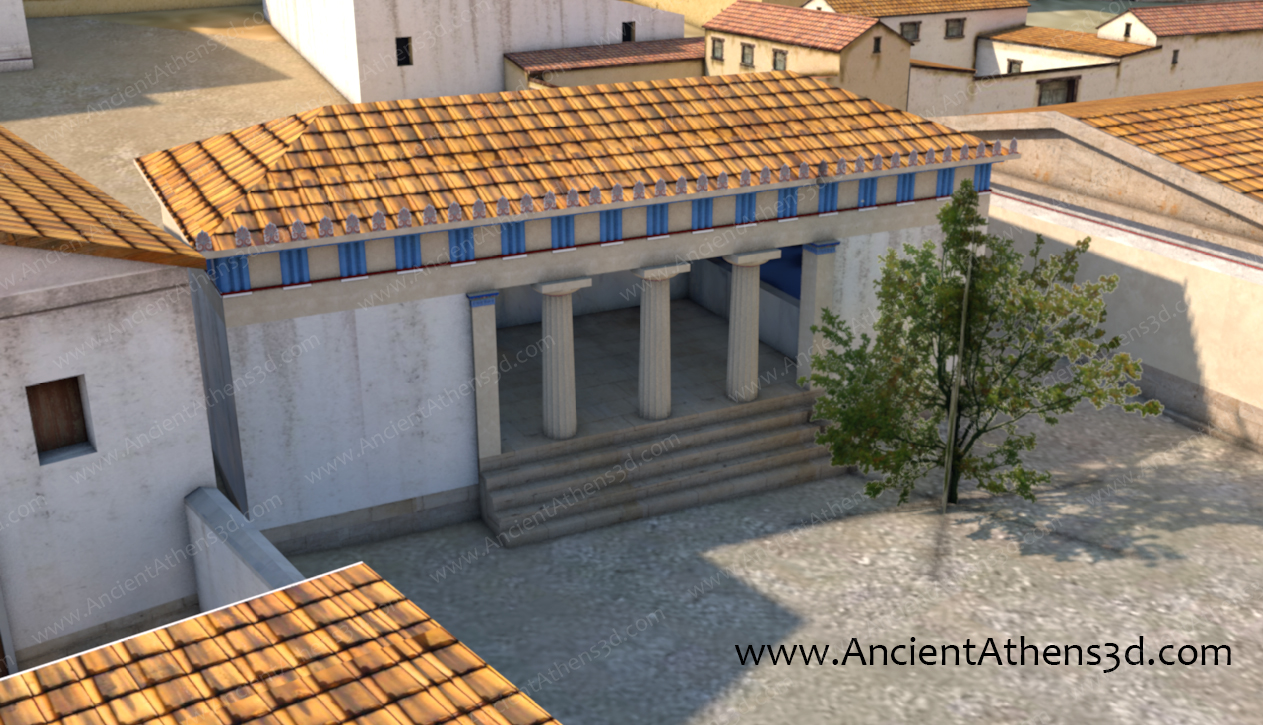
Next to the fountain house was the Mint, the building in which the famous Athenian Drachma were minted.
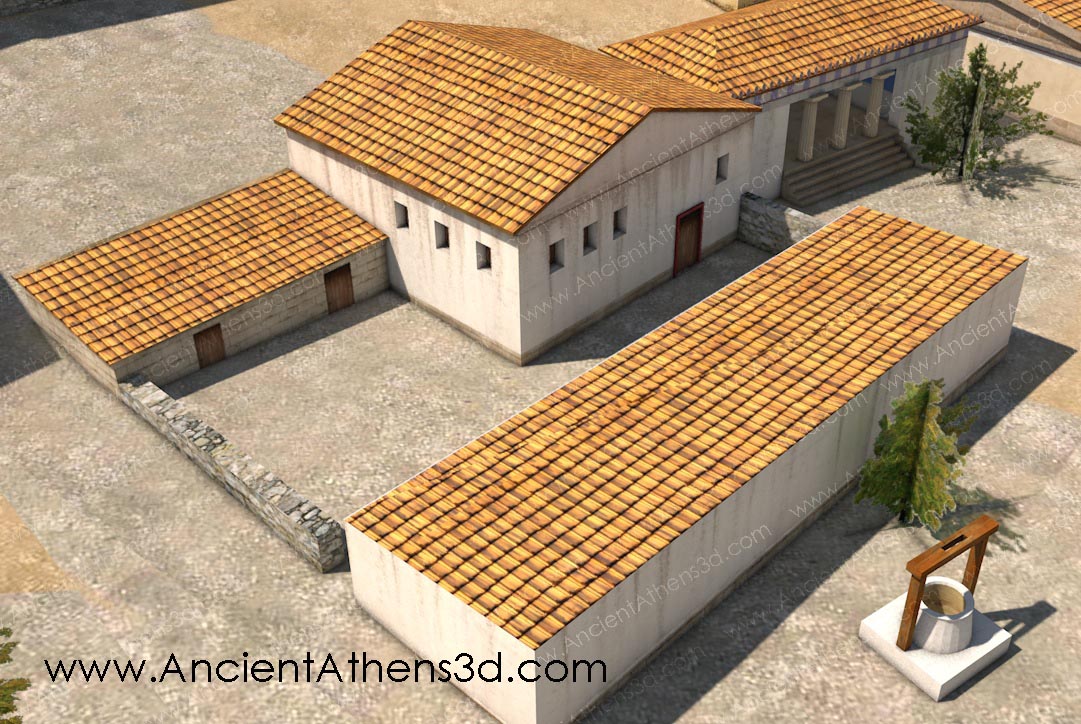
On the southwest side was the Tholos, the circular dining room of the state deputies, alongside two Bouleuteria, an old and a new one. The newer one was built around 425 BCE, but the old state archives would have been kept in the older one.
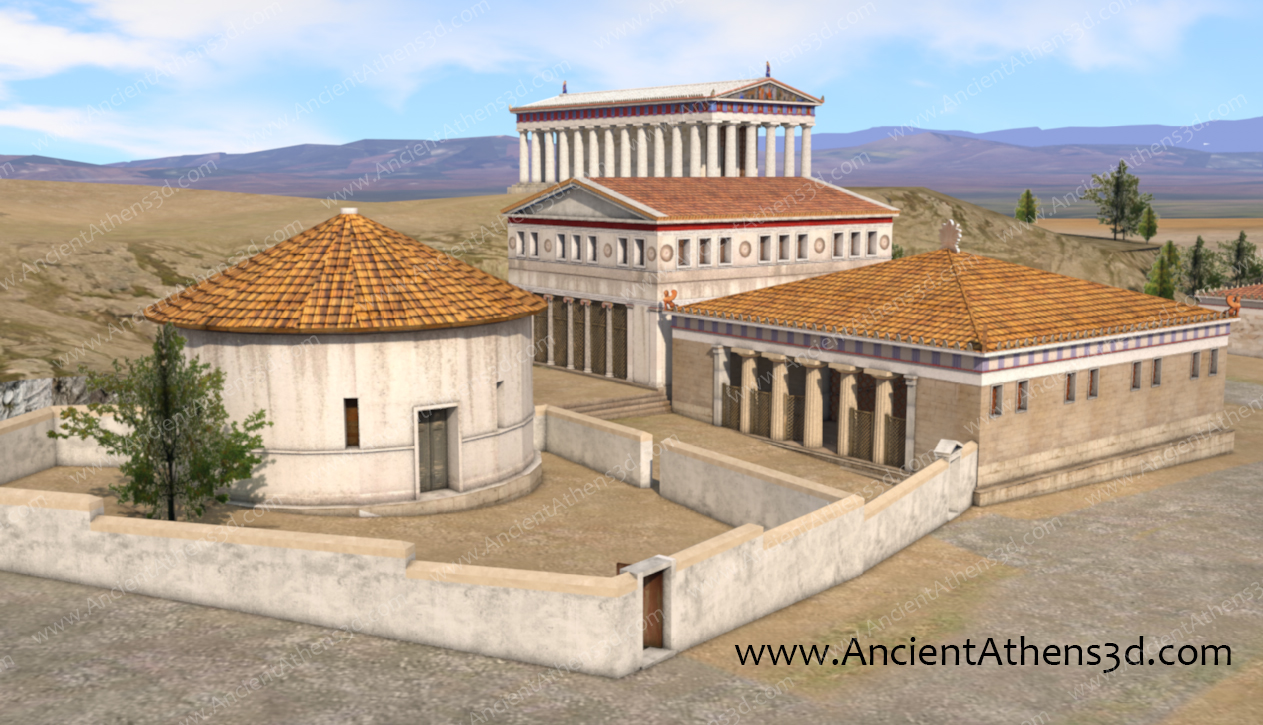
In front of the Tholos stood the Monument of the Eponymous Heroes, a raised platform with 10 statues of the heroes who gave their names to the ten tribes of Athens. Under each statue, around the base was a carving space, which had the names of each tribes’ most important citizens engraved.
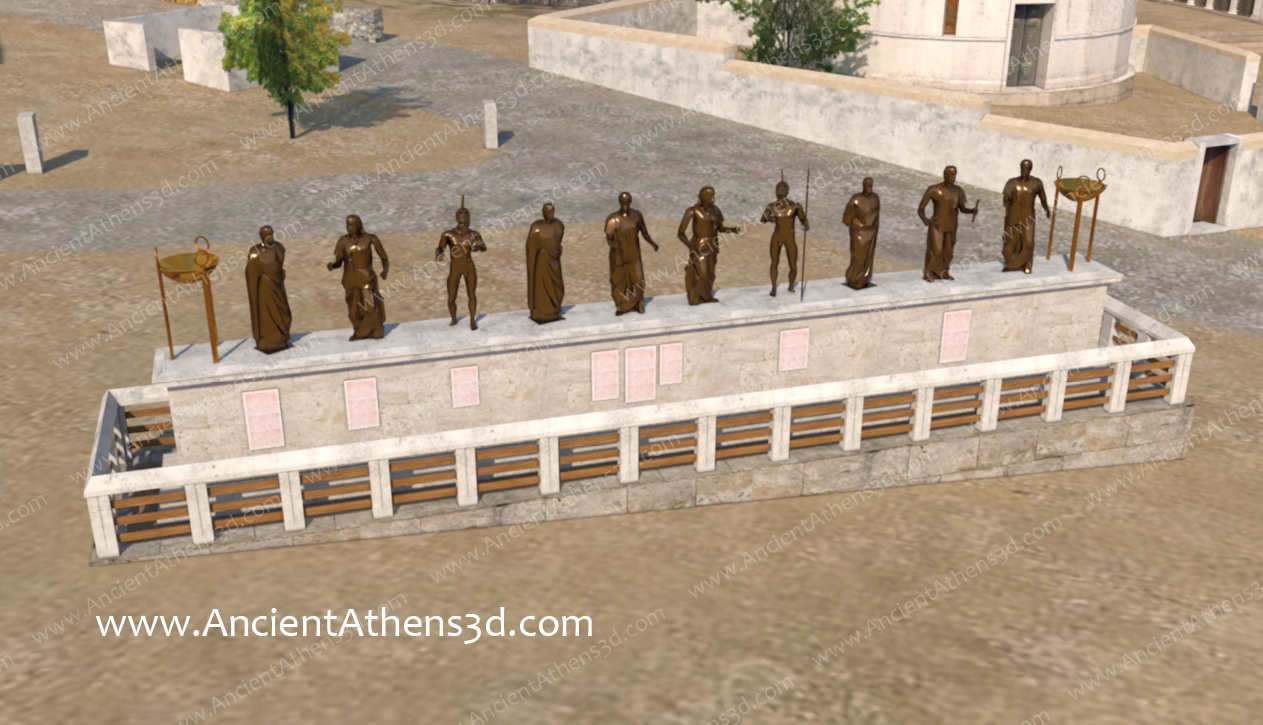
Also to the South was the famous Stoa Basileios, perhaps the oldest Stoa in Athens. Inside were the engraved laws of the city.
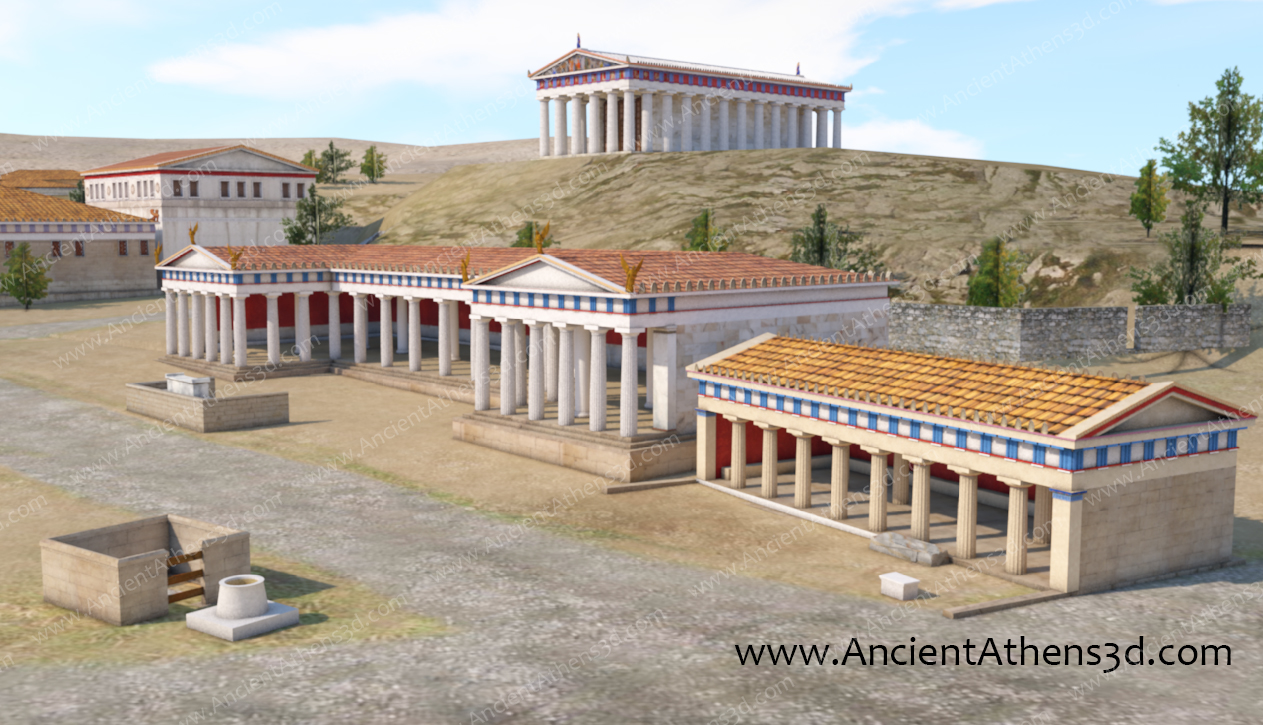
That building next to it is the Stoa of Zeus Eleutherios, which was probably built over the top of an archaic temple to him that was destroyed by the Persians.
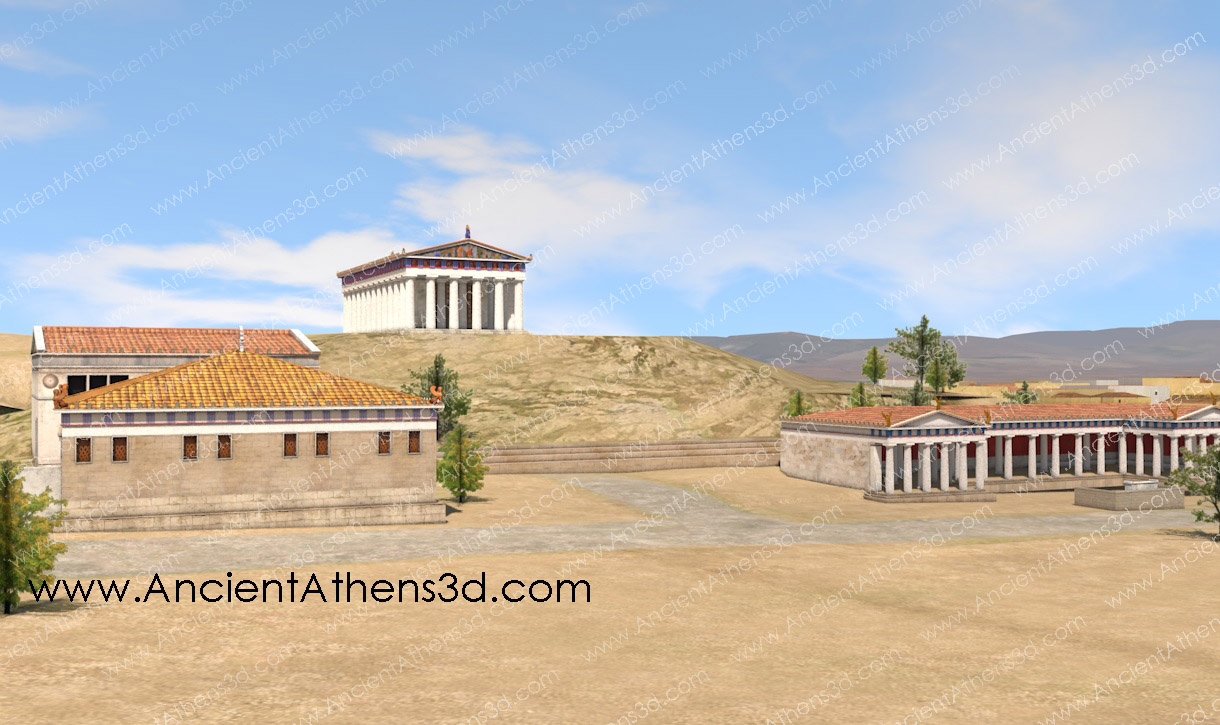
Situated on a hill overlooking this Stoa was the Hephaestion, a temple dedicated to Hephaestus and Athena.
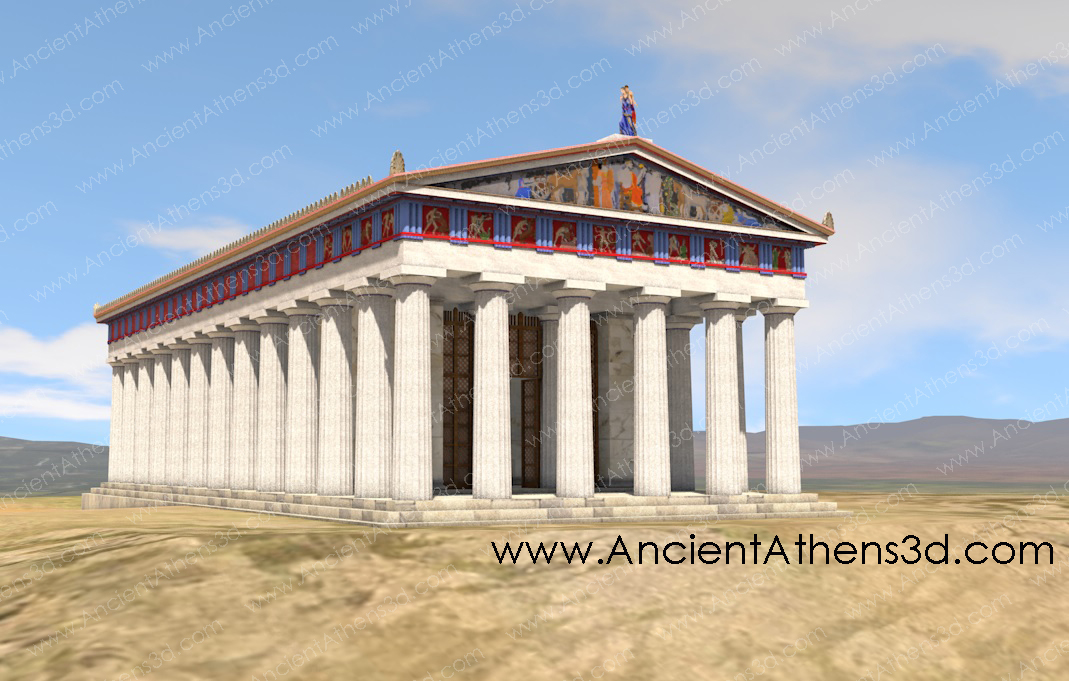
Just beneath it, carved into the hill were a series of steps, made for gatherings. This area was known as the Synedrion, and was probably used as a meeting place for courts or citizens.
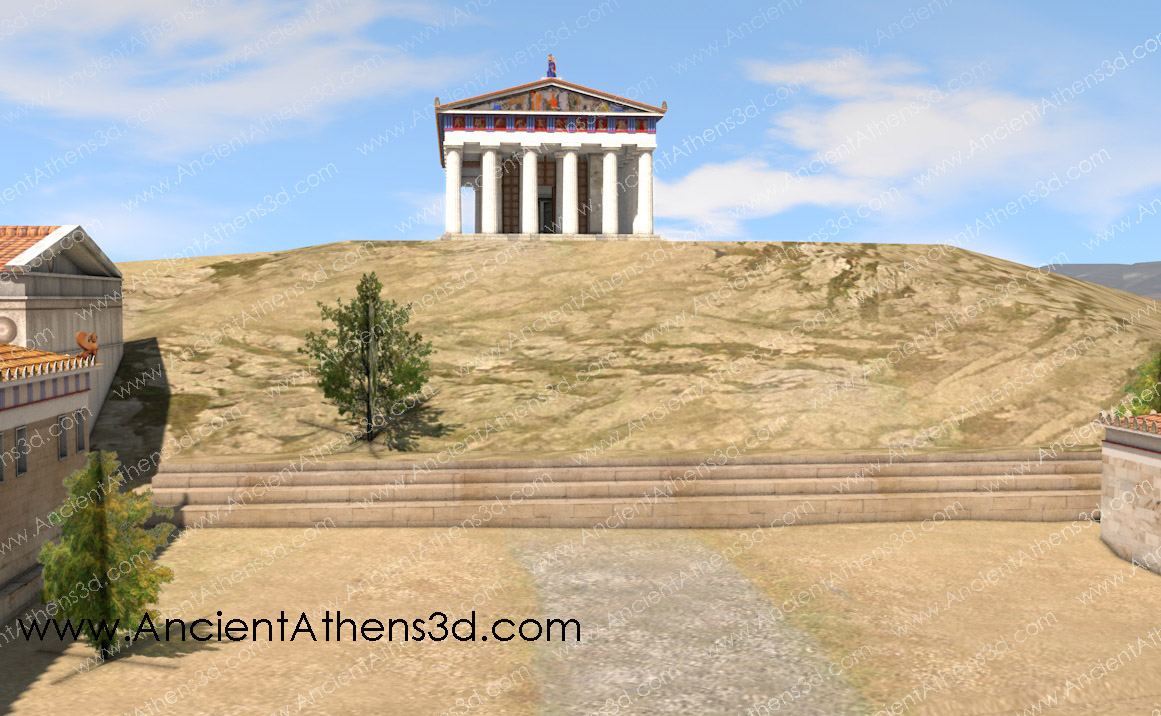
On the other side of Stoa Basileios lay the most famous Stoa of Athens, the Poikile Stoa. This was the most famous stoa for two reasons. Firstly, it was decorated with paintings created by the most important painters and secondly, it was the place where the philosopher Zeno of Citium used to teach around 300 BC, thus founding Stoicism.
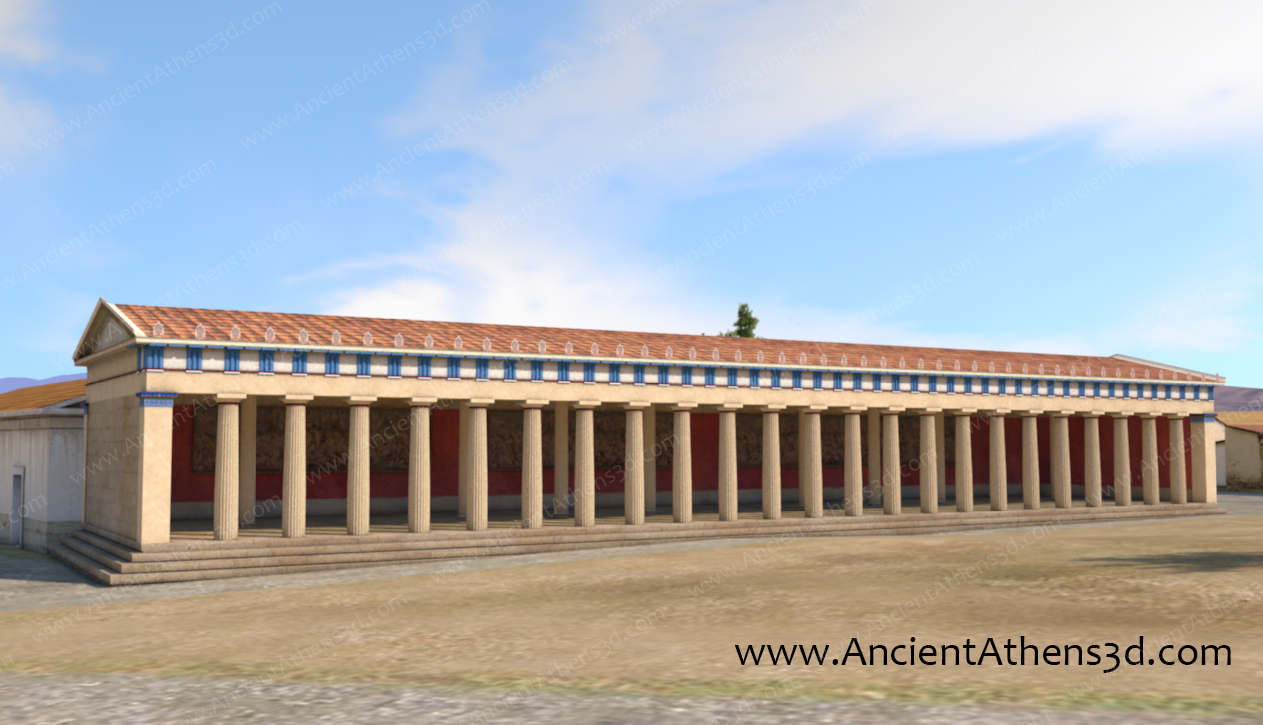
Moving further round from the Tholos we had the Aiakeion and next to it the famous South Stoa, which had up to 16 large rooms and dining areas for the public. Lying in the Eastern section of the site were the famous Law courts as can be seen here.
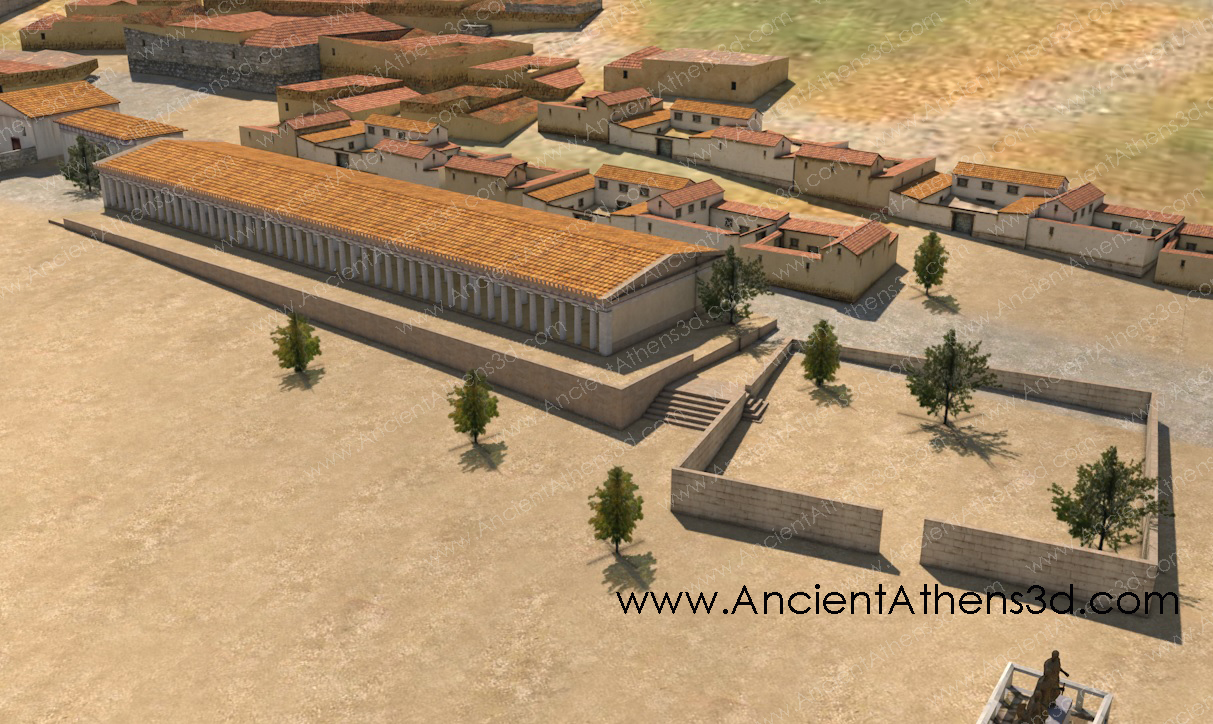
Finally, to the North, besides the Eschara and the Altar of the 12 Gods, there was also the so-called Perischoinisma, a place that -when needed, was bound with rope, tied to wooden piles, forming a square space for public speaking and debate.

Of all of these areas, the Stoa Basileios is perhaps the most misrepresented. It is occasionally called the Royal Stoa in some older pieces of literature, largely stemming from Homer’s use of the word Basileios to mean Royal or Ruler. By the time we get to Athens though, Basileios simply denotes someone in charge of decision making, centrally around matters of Law, not necessarily a king. While almost never mentioned, the blue sections you can see on the plan below are actually Middle Bronze Age burials, which gives you an idea of how significant this place has been over the centuries.

Of the two Bouleuterion, the 500 representatives of Athens would likely have met in the old one to pass and discuss laws. We’re not entirely sure why they built a new one, but at some point in its history the Old Bouleuterion became an archive. It could be a case of political refreshing, in that constructing a new one re-established political power in the Agora.
The Chora
Moving out of Athens itself, I want to address the hinterland. Notably, in the South corner of Attica lay its silver mines, which constituted a large amount of the wealth of Athens. The coast was equally important for connections with other Polises, and the movement of things like trade goods and grain to feed the city. In all, the Athenian demes (natural divisions or suburbs) were divided into three regions under Cleisthenes, the founder of Democracy. These were the Coast, the main city and the Inland. They were then divided into 10 groups called trittyes. Each trittys was called by the name of its chief deme.
He then disposed of the 4 birth-based tribes and created 10 new ones composed of one trittys from each of the 3 regions. This was a major political move that ensured central Athens was not the only one responsible for maintenance of the region, but that they could have vast connections with supporting countryside around them, with all people operating under one single identity. This was manifest in the council of 500 that would meet regularly in the Bouleuterion, taking 50 members from each tribe to ensure everyone in the region was fairly represented.
Questions remain about how central Athens operated and engaged its wider hinterland though. We have some interesting evidence in the form of fortifications at key extents or areas in the hinterland such as at Eleusis or Rhamnous which seem to suggest a collective effort to protect the territory. But there is a question of difference in whether their borders constitute political ones or ideological and religious ones. Eleusis for example was originally separate from the boundaries of the Athenian hinterland, and they had no control over it in the early Geometric period, however this changed by the Classical period. The primary way in which Athens brought Eleusis under its political control -thereby cementing its hegemony over the region of Attica, was through extending its Processual Way to provide a physical connection to the sanctuary.

From the 5th century onwards, a clear political shift occurred as we see much more emphasis being placed on political identity in the public domain. Following the Persian & Peloponnesian Wars, public monuments became central features of the hierarchy’s response to conflicts. Not only are public monuments powerful ways of cementing a collective identty or ideology but they also serve political action very well, often justifying larger taxes and the movement of resources from the population.
At the very end of the Archaic Period, we have the infamous events of the Tyrannicides, Harmodios and Aristogeiton. This epic cycle will go on to become a cornerstone of Athenian mythic tradition. Along with the later assembly, both of these figures became fundamental to defining Athenian identity as a culture that stands for equal opportunity, and numerous statues were built to represent them, a tradition that was continued in the form of the statues of the Eponymous Heroes in the Agora. These ensured that every member of the 10 tribes was equally represented & displayed.
The final part of Athens left to discuss is the Pnyx. We’ve seen the Acropolis & Agora, but the Pnyx was the space in which all citizens could meet. It became crucial to making certain decisions such as when or if to go to war. As Athens moved into the Hellenistic Period, the space became more and more monumentalised and commercial to support the greater numbers of people, eventually even including shops and dining areas. The fact that Pnyx had its own defined identity and necessity tells us a bit about the tensions that arose between decisions made by all of the citizens and those who were invested with political power.
A lot is often made about the Parthenon as a display of political power, oftentimes associated with its builder, Pericles.
He designed the temple not only to show the power of the state to the Athenian people themselves but also to outsiders. Tied up in this cultic ideology was Athena herself, the patron of the city. While people are often familiar with the monumental bronze statue of Athena Parthenos inside the Parthenon, there was another monumental statue of Athena Promachos sculpted by Pheidias, which stood between the Propylaea and the Parthenon. The Promachos epithet denoted the Warlike Athena who fought on the frontlines. Notably, this statue was far more publicly visible and displayed than the Parthenos one, signifying to Athens foreigners that Athenians first and foremost had a strong capacity for warfare.

The Parthenos Virgin Athena was to be found inside the Parthenon temple and is distinctly less warrior-like. Being heavily protected and behind the doors of the temple, flanked by the Warrior aspect of the goddess also signals potential ideological gender roles for the Greeks here, that Virginity was a cherished aspect of womanhood that required protection. So what we’re seeing with Athens is a powerful state ideology benign expressed through architecture in things such as the acropolis, monumental sculpture & the agora.
How true this model of expression is for other Polises remains to be seen, which is a fascinating question for archaeologists.
Sources
Ancient Athens 3D. Online. Available at: https://ancientathens3d.com/classical-agora/
Donati, J. 2015: The Greek Agora in its Peloponnesian Context(s). In Haggis, D. and C. Antonaccio (eds.) Classical Archaeology in Context.
Martin-Mcauliffe, S. L. and J. K. Papadopoulos. 2012: Framing Victory: Salamis, the Athenian Acropolis, and the Agora. Journal of the Society of Architectural Historians 71(3): 332-361.
Whitley, J.M. 2001: The Archaeology of Ancient Greece, chapter 13
Buckley, T. 2010: Aspects of Greek History 750-323 BC: A Source-Based Approach. Psychology Press
Gaifman, M. 2006: Statue, Cult and Reproduction. Art History. 29 (2): 258–279.
Carty, A. 2015: Polycrates, Tyrant of Samos: New Light on Archaic Greece. Stuttgart: Franz Steiner Verlag
Langer, W L. 1948: An Encyclopedia of World History. Boston: Houghton Mifflin
Kagan, D. 1998: Pericles Of Athens And The Birth Of Democracy. Free Press.
Rotroff, S, I. 2013: Industrial Religion: The Saucer Pyres of the Athenian Agora. Hesperia Supplement 47. The American School of Classical Studies at Athens
Ober, J. 1985: Fortress Attica: Defense of the Athenian Land Frontier, 404-322 B.C. Mnemosyne, Supplements, Volume: 84. Brill
Johnstone, C & Graff. R: 2018: Situating Deliberative Rhetoric in Ancient Greece: The Bouleutêrion as a Venue for Oratorical Performance. Advances in the History of Rhetoric. 21. 2-88
Don't miss a post!
Sign up to get notified of when I upload as well as any new classes delivered to your inbox.
I hate SPAM. I will never sell your information, for any reason.

